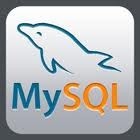In this tutorial we will install and setup Apache web server and PHP. There are many newbies out there who are really new to Linux, VPS or Server, so here i am posting easier way to setup a working live server to host websites in it. […]
Category: Linux

LFD Excessive Resource Usage Alerts
The LFD service sometimes send excessive resource usage alerts as below: Time: Thu Nov 5 12:25:47 2015 -0500 PID: 486516 (Parent PID:485265) Account: xxxxxx Resource: Virtual Memory Size Exceeded: 210 > 200 (MB) Executable: /usr/bin/php Command Line: /usr/bin/php /home/xxxxxx/public_html/index.php PID: 24933 (Parent PID:22578) Killed: No Normally these alerts received when a process utilizes more than the […]

How to Enable MySQL Event Scheduler status
We needs to enable the event scheduler in MySQL for some applications to work properly. In this case, a small change is required in the MySQL configuration file my.cnf. […]

“Another mysqld server running on port: 3306” error
While starting/restarting the MySQL service on a Linux server,MySQL service may start throwing errors as below: [wpfmb type=’error’ theme=2] Can’t start server: Bind on TCP/IP port: Address already in use: Do you already have another mysqld server running on port: 3306 ?Aborting[/wpfmb] […]

“MySQL is running but PID file could not be found” error
Sometimes while restarting MySQL service, you may get a error as: [wpfmb type=’error’ theme=2]MySQL is running but PID file could not be found[/wpfmb] In our case, the issue was with the pid file and solution is: […]

Test Linux Operating System for IPv6 Networking Support
There is an easy way to find out if Linux kernel compiled with IPv6 or not. To check, whether your current running kernel supports IPv6, Go to your /proc-file-system and look for the following entry: […]

How to Install XCache PHP Module in cPanel
Today in this article we will show you to install XCache PHP module in cPanel.To install this module in cPanel server, Access your server using putty or other with root user and run following command. […]
How to install PHP curl extension
Sometimes we get the PHP’s curl extension is not installed! error on WordPress.Solution is very handy, simply do the following: […]
How to Enable Apache mod_rewrite Module in Ubuntu
In this tutorial, we will show you how to manage URL rewrites using Apache2’s mod_rewrite module. When we installed a fresh Apache server mod_rewrite is not enabled by default on server, So to use rewrite configurations we need to manually enable mode_rewrite module on our system.This is a most basic way to enable mod_rewrite. […]

Basic security steps for Centos Web Panel
We have previously discuss how to install CWP on your VPS/Server.Today we are going to perform some basic security steps to secure your server,Follow these simple steps to do so. […]
